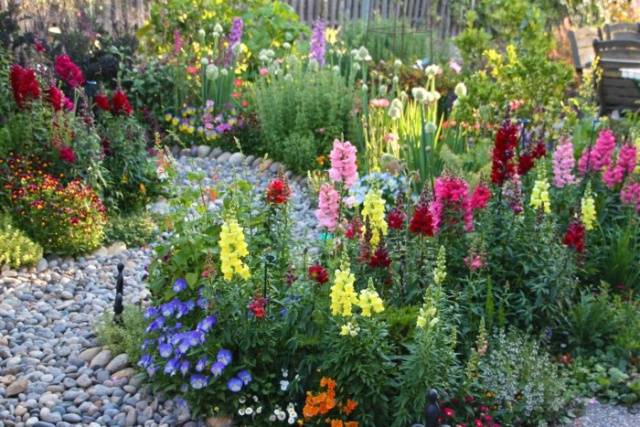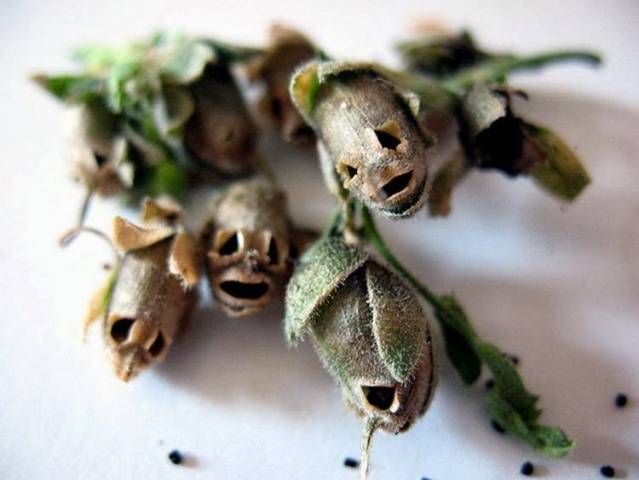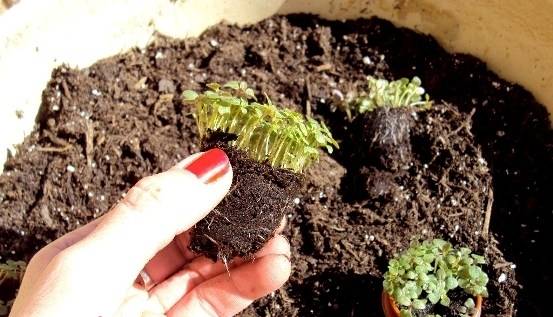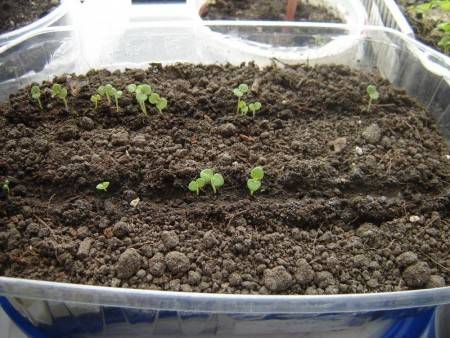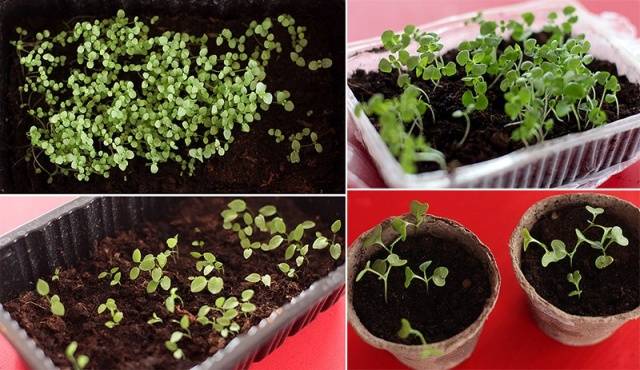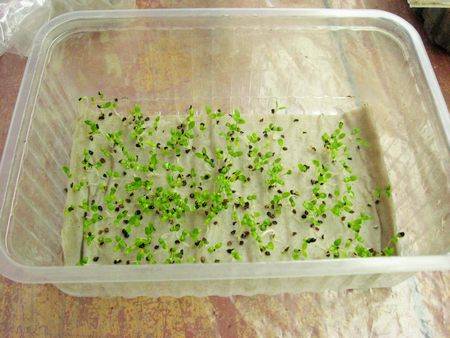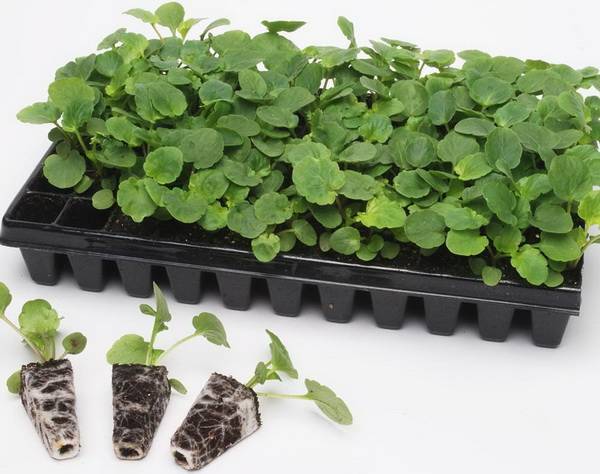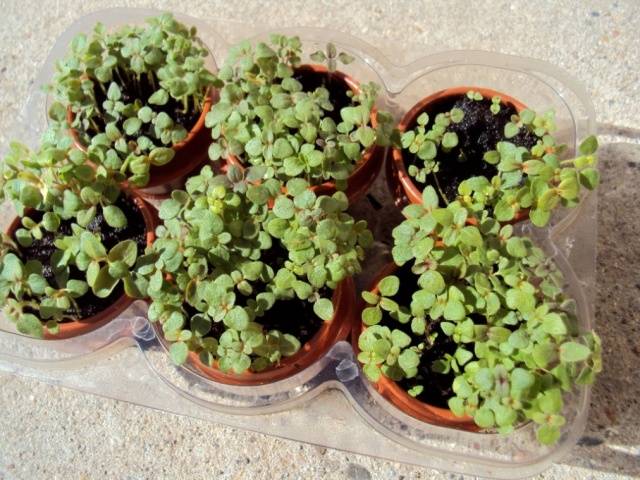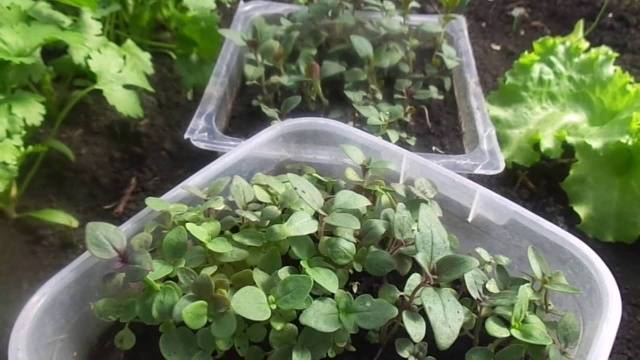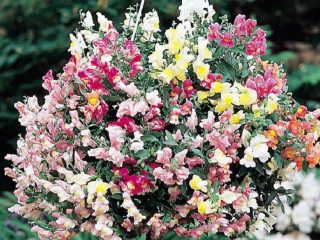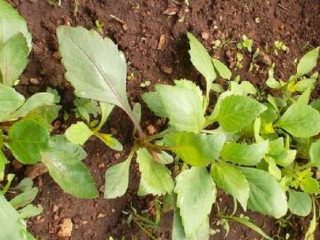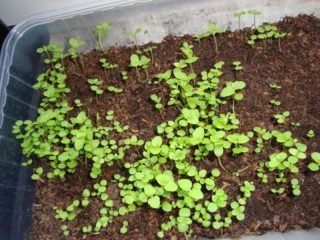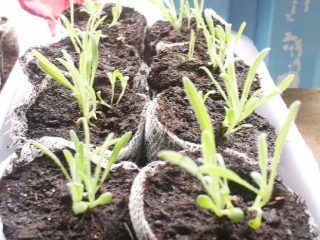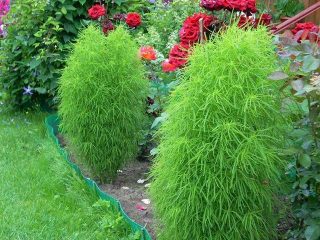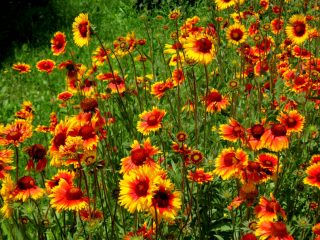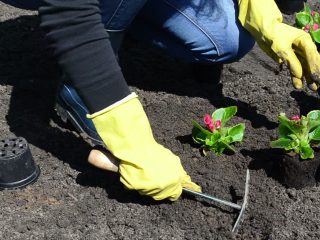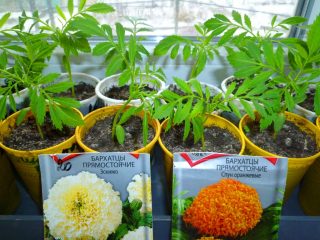Content
Antirrinum, or, more simply, snapdragon, is one of the most popular annuals that can delight the heart of a gardener, starting literally from the warmest days of May to the first frosty days in autumn.
Perhaps the flower has gained such popularity due to the variety of subspecies and varieties, because the height of antirrinums can vary from tiny babies (15-25 cm) to stately handsome men (70-120 cm). The color range of inflorescences is no less varied, only blue shades are absent in it. Snapdragon inflorescences are not only one-color, but also two- and even three-colored. The shape of the inflorescences can also be very diverse. One inflorescence stays on the plant for about 12 days, the flowering period of the whole plant is about 3-4 months. Using only one variety of snapdragons, you can fill both flower beds and borders, and decorate paths with them, as well as landscape flower beds in the garden.
Despite the great popularity of snapdragon, many gardeners still have many problems when growing it from seeds, disputes about when it is better to plant it on seedlings and whether it should be done at all do not subside. It also happens that many people prefer to buy ready-made seedlings so as not to bother once again with seeds, soil and pots.
In fact, there is nothing insurmountable in the cultivation of anti-rhinum, and in recent years, cunning flower growers have invented many techniques and tricks to facilitate this difficult but exciting process. Learn all about growing a snapdragon from seed at home in this article.
Seed preparation
If you have ever dealt with sowing a snapdragon, then you can well imagine how small its seeds are. One gram can fit from 5 to 8 thousand seeds. It is the very small size of the seeds that is usually the biggest challenge for flower growers. Not only that, antirrinum seeds, like most small seeds, are light dependent, which means they need light to germinate. Therefore, when sowing, they must be evenly distributed over the surface of the soil and in no case should they fall asleep from above.
If you have already grown snapdragon in your garden and decided to collect seeds from a flower, then this is easy to do. In this case, the collection of the seed pods is best done before they are fully ripe. The top of the stem with the resulting capsule fruits is cut off and hung in a paper bag in a dry place. After ripening, the seeds spill out of the dry fruits themselves. It is undesirable to use a plastic bag, as the stem can rot in it. Before planting, it is better to store your seeds in any paper or cardboard packaging in the refrigerator or other cool room with a temperature of about + 5 ° C. So the seeds will undergo additional stratification, and their germination will improve. Snapdragon seeds are capable of germinating for 4 years.
Antirrinum seeds purchased in stores and markets do not need any additional processing.
Sowing dates
The question of when to plant snapdragons on seedlings is one of the most pressing, since information about this varies greatly from source to source.It is impossible to answer this question unambiguously. And all because among the variety of modern varieties and hybrids of snapdragon, there are several groups that differ greatly in terms of flowering time.
Common, most common snapdragon varieties bloom from about July, but bred hybrids and some short-day varieties can bloom in early spring, and even in winter, if they are provided with favorable conditions for this. Therefore, always carefully study all the information on the timing of sowing on seed bags.
It is also necessary to take into account the fact that tall varieties of snapdragons need on average more time to flower. While many low-growing varieties of antirrinum can be sown even in April and already at the end of June, admire their flowering.
In the southern regions of Russia, with early and warm spring, snapdragons are often sown in April-May directly into open ground. After all, these flowers are very cold-resistant and can even withstand significant drops in temperature. They don't need a lot of warmth, but light means a lot to them.
Even in the middle lane, you can try to leave snapdragons for the winter in the garden, because by their nature these plants are perennials. If there is a lot of snow, then in the spring you can find numerous shoots that are easy to thin out and plant in future flower beds.
Seed planting methods
Today there are several ways of sowing plant seeds. Among them there are both traditional and those that are used for sowing especially small seeds and a special method of growing with a lack of space on the windowsills. They all work and give good results. You can try all of them or choose something that suits you best.
Traditional sowing method
Snapdragon is a fairly unpretentious plant, so it can grow in almost any soil you can offer it. Standard soil for growing seedlings is fine. Since its seeds are very small, some of the prepared soil must be sifted through a fine sieve. You can germinate seeds in any container of suitable size. Snapdragon tolerates picking well, so it is better to sow seeds in one container. Next, we take the following steps step by step:
-
At the bottom of the container, put a centimeter layer of fine expanded clay or perlite, which will serve as drainage. If the germination container is small in height, then the drainage layer is optional, but then it is necessary to make several holes in the bottom so that excess moisture does not stagnate.
- Fill the container with soil, not reaching the edges of 2-2.5 cm, and compact it a little.
- Spill water over the soil so that it is well moistened. If you have not sterilized the soil, you can spill it with boiling water.
- Pour 1-1.5 cm of earth thoroughly sifted through a sieve on top.
- It is not necessary to compact the topmost layer of earth; it is enough just to spill it with water, preferably from a spray bottle.
- Using a piece of paper folded in a corner, spread the seeds evenly over the entire surface of the soil, or sow them in rows as you like.
- Sprinkle the sown seeds slightly with water from a spray bottle on top so that they are nailed to the surface of the soil.
-
Cover the container with a piece of glass, polycarbonate, or a plastic bag on top. This will create a greenhouse effect that will help the seeds germinate faster and not dry out in the first days after germination.
- Place the container of snapdragon seeds in a well-lit area. Heat is not so important in this case. Seeds can germinate at + 10 ° + 12 ° C, but optimum temperatures vary from + 18 ° C to + 23 ° C.
- The first seedlings may appear as early as 3-5 days, but most seedlings usually appear after 10-15 days.
In the video below, you can clearly see all the subtleties of the traditional sowing of antirrinum:
Special techniques and supplements
With the traditional sowing of snapdragon seeds, special techniques are often used that promote accelerated germination of seeds, and also prevent them from dying in the first weeks after germination.
It is on these days that they are most susceptible to various fungal infections and can easily die without having time to get stronger.
To facilitate sowing and germination of seeds, the surface of the soil can be sprinkled with a thin layer of oven-calcined sand or vermiculite. Both substances prevent the spread of possible infections. In addition, vermiculite is still able to regulate the amount of moisture in the substrate - it absorbs excess moisture and gives it away when it dries. The seeds are sown directly on top of sand or vermiculite, and they can even be slightly "powdered" with the same substances.
Since snapdragon is a very cold-resistant plant, snowing is often used for sowing convenience. Snow is poured over the prepared soil in a small layer, and antirrinum seeds are scattered on top of it. On a white snowy surface, black seeds are clearly visible and this allows you not to thicken the crops. In the process of melting, the snow will slightly pull the seeds into the soil, providing them with good adhesion to the soil and, as a result, their quick and friendly germination.
In addition, immediately after the emergence of seedlings, the first careful watering of tiny sprouts is best done not with ordinary water, but using a phytosporin solution (10 drops per 1 liter of water). This will help prevent all possible problems associated with fungal infections.
Landless sowing
For convenient sowing of small seeds, a special technology has been invented, which is ideal for planting snapdragons. Since it is more convenient to plant this flower in the ground not one by one, but in groups of 3-5 plants. In this form, it looks even more decorative.
So, for this method you need a small flat container, preferably transparent. This can be a glass or plastic tray or saucer. Cover its bottom with a thick paper towel or even ordinary toilet paper in several layers.
Then, using a spray bottle, moisten the napkin with plenty of water. Instead of water, you can use a solution of any growth stimulant, such as Epin, Zircon, or the same Fitosporin. The napkin should be wet, but puddles on it are undesirable. After that, evenly distribute the antirrinum seeds over the napkin in any way convenient for you. Again, lightly spray the liquid over the seeds. This completes the main planting process. Carefully pack the container with seeds in a plastic bag and put in a bright place. No dirt, no dirt - everything is very simple and fast.
But this method, despite its convenience, requires constant attention and control.
It is at this moment that the seeds in the container must be carefully sprinkled with light earth sifted through a fine sieve, with a layer of about half a centimeter.
If you miss the moment of seed germination, and the seedlings have time to stretch out a little and become covered with green foliage, then all is not lost. They also need to be covered with earth, but already scattering it from above, directly through a sieve. This must be done very carefully so as not to damage the thin sprouts. After that, all the seedlings are also carefully sprayed with water from a spray bottle.
For a detailed video on this method of germinating antirrinum seeds, see below:
Seedlings: from germination to planting in the ground
Snapdragon usually germinates rather slowly - on average, it takes 8 to 12 days to germinate. Although, as practice shows, in some individual cases, if you use your own fresh seeds stored in suitable conditions, the first seedlings may appear as early as 3-4 days after planting.
Even before the emergence of seedlings, the film must be slightly opened at least once a day, airing the planting. After the emergence of sprouts, it is necessary to continue daily airing, not forgetting to control the soil for moisture. If necessary, it must be carefully moistened with a spray bottle. Snapdragon really does not like excessive moisture, especially in the early stages of growth, so it is better to dry the plants a little than to allow waterlogging.
The film can be completely removed only after the opening of the second pair of (real) leaves.
Somewhere in the same period, the seedlings can be sorted into separate cups. As mentioned earlier, it is better to place several plants at once in each glass. It will be easier to do and the plants will feel better. If there is a lack of space on the windowsills, then you can open the snapdragon seedlings into diapers.
This method is well illustrated in the following video:
If you have sown seeds quite rarely, then the seedlings can be grown even without picking in order to plant the plants already in open ground. If you gradually harden the seedlings, then this can be done even in May, since young snapdragon plants are able to withstand even short-term frosts down to -3 ° -5 ° C.
In the case of landless sowing of anti-rhinum, as the seedlings grow, constantly add light earth to the roots of the plants. This will help the plants not to stretch and develop fully.
Snapdragon does not need feeding before it is planted in open ground. Only Fitosporin or Vermicompost solution can be added to the water for irrigation.
Outcomes
As you can see, in order to successfully grow a snapdragon from seeds, you need to know some features and nuances. But even at home, there is nothing particularly difficult in this process, but you can provide yourself and your friends with luxuriously blooming colorful flower beds.
